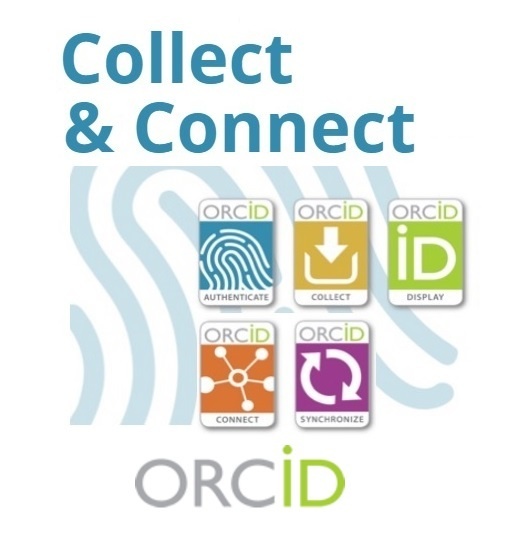Collect & Connect: ORCID’s integration and engagement program


The Collect & Connect program (launched on May 2016) streamlines the integration process and fosters a shared user experience. This ensures researchers and ORCID member-integrators understand what ORCID is, and why and how to engage.
The ORCID system is an emerging, yet widely supported, mechanism for assigning and managing persistent and unambiguous personal identifiers for use in the scholarly attribution chain... This enhances discovery of authors and content across disciplines, - Why does ORCID matter ? ... Interoperability - created through ORCID - means:
|
With hundreds of ORCID members globally building ORCID identifiers into their systems, as well as some funders and publishers now requiring ORCID iDs, researchers are increasingly likely to encounter ORCID in their day-to-day life.
# ORCID’s mantra is 'Enter Once, Re-use Often'
and, to achieve this in a reliable, trustworthy, and transparent way, it’s essential that organizations play their part by creating validated assertions about the connections between them and their researchers.
# Collect & Connect
program was launched to encourage organizations to take part in building a trusted research infrastructure (ORCID TRUST).
This means - to engage all of ORCID members in collecting ORCID iDs in the systems that their researchers use, and asserting validated connections with those researchers.
The Collect & Connect program sets out the requirements for each sector - funders, publishers, and research institutions - to help achieve ORCID mantra of 'Enter Once, Re-use Often' by:
Collecting | validated ORCID iDs for individuals to ensure they’re correctly associated with their affiliations and contributions |
Displaying | iDs to signal to researchers that the information system is plumbed to support their use of ORCID |
Connecting | information about affiliations and contributions to ORCID records, creating trusted assertions and enabling researchers to easily provide validated information to other systems and profiles they use |
Synchronizing | between research information systems to improve reporting speed and accuracy, and reduce data entry burden for researchers and administrators alike |
Underpinning everything is ORCID authentication - requiring users to log into their ORCID record to share their iD, rather than keying in or pasting their ORCID iD into a data field. | |
Check out:
- ORCID Collect & Connect information for funders, research organizations, and publishers
- ORCID Knowledge Base and Outreach Resources for communicating the benefits of ORCID for researchers
To learn more about the ORCID Collect & Connect Program, in particular:
- Has the program been effective at communicating its goals?
- How many of ORCID member integrations have been reviewed?
- What are the main challenges for ORCID members in launching effective ORCID integrations?
- How the program can better support ORCID members as they build and update their integrations?
check out:
Post Scriptum:
“You never change things by fighting the existing reality. To change something, build a new model that makes the existing model obsolete.”
“Never doubt that a small group of thoughtful, committed citizens can change the world. Indeed, it is the only thing that ever has.”, - Open Access Network
_________________________________________________________________________________________________
Related content:
- Institutional ORCID Implementation and CostBenefit Analysis Report
- Discovering Scholarly Orphans Using ORCID
- EPrints Imports via DOI and ORCID
- I4OC : supporting openly accessible citations
- Guidelines for the optimal use of Digital Object Identifiers for germplasm samples
- ICSU-WDS : Trusted Data Services for Global Science
- From ScholarlyData.org to pioneering the Linked Open Research Cloud
- OpenCitations project
- Open Science 101 project
- ScienceOpen : a freely accessible research network

